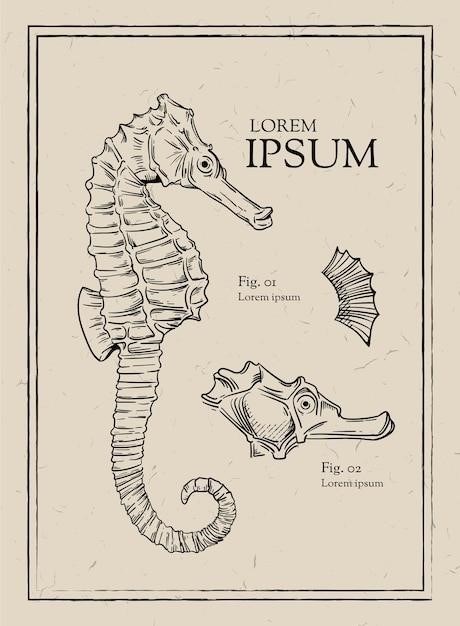Fathers Day Gift Guide⁚ Thoughtful Ideas for Dad in 2024
Fathers Day is a special occasion to show appreciation for the dads in our lives․ Whether he’s a tech enthusiast, an outdoorsman, or a foodie, there’s a perfect gift out there for him․ This guide will help you find the ideal present, from personalized keepsakes to exciting experiences and thoughtful gadgets․
Introduction
Fathers Day is a time to celebrate the incredible dads in our lives, the men who provide unwavering support, guidance, and love․ It’s a day to acknowledge their hard work, their sacrifices, and their unique contributions to our families․ While a simple “Happy Fathers Day” is always appreciated, a thoughtful gift can truly convey your gratitude and appreciation․
In 2024, the trend for Fathers Day gifts is shifting towards personalization, innovation, and experiences․ Gone are the days of generic ties and socks; today’s dads are seeking gifts that reflect their individual personalities and interests․ The emphasis is on finding something unique, something that speaks to their passions and creates lasting memories․
This guide offers a curated selection of gift ideas, carefully chosen to cater to a diverse range of dads․ Whether he’s a tech-savvy gamer, an adventurous outdoorsman, or a culinary enthusiast, you’ll find inspiration for the perfect present․
So, let’s embark on a journey to find the perfect Fathers Day gift, one that celebrates his individuality and expresses your love and appreciation in a meaningful way․
Personalized Gifts
Personalized gifts are a wonderful way to show your dad that you put extra thought and care into his present․ These gifts are not just about the object itself, but about the sentimental value they hold․ They represent a unique connection between you and your dad, making them truly special and cherished․
Here are some ideas for personalized gifts that are sure to make a lasting impression⁚
- Engraved Jewelry⁚ A classic choice, engraved jewelry adds a personal touch to a timeless gift․ A watch, a bracelet, or a necklace with his initials, a special date, or a meaningful quote will be a reminder of your love and appreciation every time he wears it․
- Customized Decor and Art⁚ A framed photo collage, a personalized canvas print, or a custom-made piece of art with his favorite hobbies or quotes can add a unique touch to his home and serve as a constant reminder of your bond․
- Creative Hobby Items⁚ If your dad has a passion for woodworking, painting, or photography, consider getting him a personalized tool set, a custom-made easel, or a personalized camera strap․ This will show your support for his interests and provide him with tools to pursue his hobbies․
Personalized gifts are a thoughtful and memorable way to celebrate Fathers Day․ They go beyond the ordinary, demonstrating your love and understanding of your dad’s unique personality and interests․
Experiences and Activities
For dads who crave adventure, new experiences, and quality time with loved ones, consider gifting them an unforgettable experience or activity․ These gifts go beyond material possessions, creating lasting memories and strengthening your bond․
Here are some ideas for experiences and activities that will make Fathers Day truly special⁚
- Weekend Getaway⁚ Escape the ordinary and plan a weekend getaway to a scenic destination․ Whether it’s a cozy cabin in the mountains, a relaxing beach resort, or a bustling city with exciting attractions, a change of scenery can be rejuvenating for both of you;
- Sporting Event Tickets⁚ If your dad is a sports fan, surprise him with tickets to a game featuring his favorite team․ The excitement of the game, the camaraderie with fellow fans, and the shared experience will create a lasting memory․
- Adventure Activity⁚ For the thrill-seeker, consider gifting a skydiving experience, a white-water rafting trip, or a rock climbing session․ These activities offer a unique challenge and a chance to push boundaries, creating a story to tell for years to come․
Experiences and activities are unique and meaningful gifts that create lasting memories and strengthen the bond between you and your dad․ They are a departure from the traditional material gifts, offering a chance to share quality time, try something new, and make Fathers Day truly unforgettable․

Tech and Gadgets
For the tech-savvy dad who loves staying connected, exploring new gadgets, and embracing the latest innovations, a tech gift is sure to impress․ From smart home devices to cutting-edge gadgets, there’s a wide range of options to suit his interests and needs․
Here are some tech and gadget ideas for the modern dad⁚
- Smartwatch⁚ A smartwatch is a versatile and practical gift that combines fitness tracking, notifications, and communication features․ It can help him stay active, manage his schedule, and stay connected, all in one sleek device․
- Noise-Canceling Headphones⁚ If your dad enjoys listening to music or podcasts, noise-canceling headphones can provide a sanctuary of tranquility․ They block out distractions, enhancing his listening experience and creating a peaceful oasis․
- Wireless Charging Pad⁚ A wireless charging pad eliminates the hassle of tangled cords and offers a convenient way to keep his devices powered up․ It’s a thoughtful and practical gift that simplifies his daily routine․

When choosing a tech gift, consider his current devices, his hobbies, and his lifestyle․ A thoughtful tech gift will not only be appreciated but also enhance his daily life, making it easier, more enjoyable, and more connected․
Home and Lifestyle
For the dad who prioritizes comfort, relaxation, and creating a welcoming atmosphere at home, a home and lifestyle gift is a thoughtful way to show your appreciation․ These gifts enhance his daily routine, create a sense of well-being, and add a touch of personalization to his living space․
Here are some home and lifestyle gift ideas to consider⁚
- High-Quality Bedding⁚ A luxurious set of sheets, a cozy blanket, or a plush pillow will elevate his sleep experience, making his bedroom a haven of comfort and relaxation․
- Smart Home Device⁚ A smart speaker, a smart lighting system, or a smart thermostat can enhance his home’s functionality and convenience, creating a more comfortable and efficient living space․
- Personalized Photo Album or Calendar⁚ A photo album filled with cherished memories or a calendar featuring family photos is a sentimental and heartwarming gift that will bring a smile to his face․
- Subscription Box for His Interests⁚ There are subscription boxes tailored to various hobbies and interests, such as coffee, craft beer, grooming products, or outdoor gear․ This ongoing gift provides a regular treat and caters to his passions․
A home and lifestyle gift shows that you care about his well-being and his enjoyment of his personal space․ It’s a thoughtful gesture that demonstrates your love and appreciation for the comfort and happiness he brings to your lives․
Food and Drink
For the dad who enjoys the finer things in life, a food and drink gift is a delightful way to celebrate his palate and appreciation for good taste․ These gifts offer a luxurious experience, a chance to indulge in new flavors, and a reminder of your thoughtfulness․
Here are some food and drink gift ideas to consider⁚
- Gourmet Food Basket⁚ A curated basket filled with artisanal cheeses, gourmet chocolates, specialty coffee beans, or unique snacks is a luxurious treat that appeals to his sense of adventure in the culinary world․
- Craft Beer or Wine Subscription⁚ A subscription to a craft brewery or winery delivers a regular selection of new and interesting brews or wines, allowing him to explore different flavors and expand his palate․
- Cooking Class or Wine Tasting Experience⁚ A hands-on cooking class or a guided wine tasting session provides a fun and engaging experience, allowing him to learn new skills or deepen his knowledge of his favorite beverages․
- High-Quality Grill Tools or Kitchen Gadgets⁚ For the dad who enjoys grilling or cooking, a set of high-quality grill tools, a state-of-the-art kitchen gadget, or a specialized cookbook can enhance his culinary skills and enjoyment․
A food and drink gift is a celebration of his appreciation for good food and beverages․ It’s a reminder that you value his unique tastes and enjoy sharing special moments with him over a delicious meal or a fine drink․
Gifts for the Outdoorsman
For the dad who finds solace in the great outdoors, a gift that enhances his adventures and connects him with nature is a perfect way to celebrate his love for the wild․ From practical gear to luxurious experiences, these gifts cater to his adventurous spirit and passion for the outdoors․
Here are some gift ideas for the outdoorsman⁚
- High-Performance Hiking Boots or Backpack⁚ A pair of durable hiking boots or a spacious backpack designed for comfort and functionality will elevate his hiking and camping trips, ensuring he’s equipped for any terrain․
- Telescope or Binoculars⁚ A high-quality telescope or pair of binoculars allows him to explore the night sky or observe wildlife with greater clarity, enhancing his appreciation for the natural world․
- Camping Gear Upgrade⁚ A new tent, sleeping bag, or camping stove can make his outdoor adventures more comfortable and enjoyable, allowing him to embrace the wilderness with greater ease․
- National Park Pass or Wilderness Experience⁚ A National Park Pass grants him access to all national parks, while a guided wilderness experience like a kayaking tour or a fly-fishing trip offers a unique and memorable adventure․
A gift for the outdoorsman is a celebration of his love for nature and his desire to connect with the wilderness․ It’s a reminder that you appreciate his adventurous spirit and his passion for exploring the great outdoors․
Gifts for the Foodie
For the dad who finds joy in the culinary arts, a gift that celebrates his love for food and drink is a delicious way to show your appreciation․ From gourmet treats to culinary experiences, these gifts cater to his discerning palate and passion for all things edible․
Here are some gift ideas for the foodie dad⁚
- Gourmet Food Basket⁚ A curated selection of artisanal cheeses, cured meats, gourmet crackers, and exotic spices will delight his taste buds and offer a delightful culinary adventure at home․
- Cooking Class or Wine Tasting⁚ An immersive cooking class or wine tasting experience allows him to expand his culinary knowledge and create new memories while indulging in his passion for food and drink․
- Subscription Box for Foodies⁚ A monthly subscription box filled with unique ingredients, spices, or gourmet snacks delivers a continuous stream of culinary surprises, keeping his taste buds engaged․
- High-Quality Kitchen Gadgets⁚ A state-of-the-art blender, a versatile food processor, or a set of premium knives can elevate his cooking game and enhance his culinary creativity․
A gift for the foodie dad is a tribute to his love for delicious flavors and his appreciation for the art of cooking and dining․ It’s a reminder that you value his culinary expertise and his passion for creating memorable meals․
Gifts for the Tech Savvy Dad
For the dad who embraces the latest gadgets and technological advancements, a gift that caters to his tech-savvy nature is a surefire way to impress․ From cutting-edge wearables to smart home devices, these gifts will enhance his digital lifestyle and keep him connected and entertained․
Here are some gift ideas for the tech-savvy dad⁚
- Noise-Cancelling Headphones⁚ High-quality noise-cancelling headphones allow him to enjoy his favorite music, podcasts, or audiobooks without distractions, providing a blissful escape in a noisy world․
- Smartwatch⁚ A smartwatch with advanced fitness tracking, notification alerts, and mobile payments empowers him to stay connected, active, and organized, enhancing his daily routine․
- Portable Bluetooth Speaker⁚ A powerful and portable Bluetooth speaker allows him to enjoy his music and podcasts anywhere, from the backyard to the beach, bringing his favorite sounds to life․
- Virtual Reality Headset⁚ Immerse him in a world of virtual reality gaming, entertainment, and educational experiences with a cutting-edge VR headset, expanding his digital horizons․
A gift for the tech-savvy dad is a testament to his embrace of innovation and his passion for exploring the latest technological advancements․ It shows that you understand his interests and appreciate his love for all things digital․





























